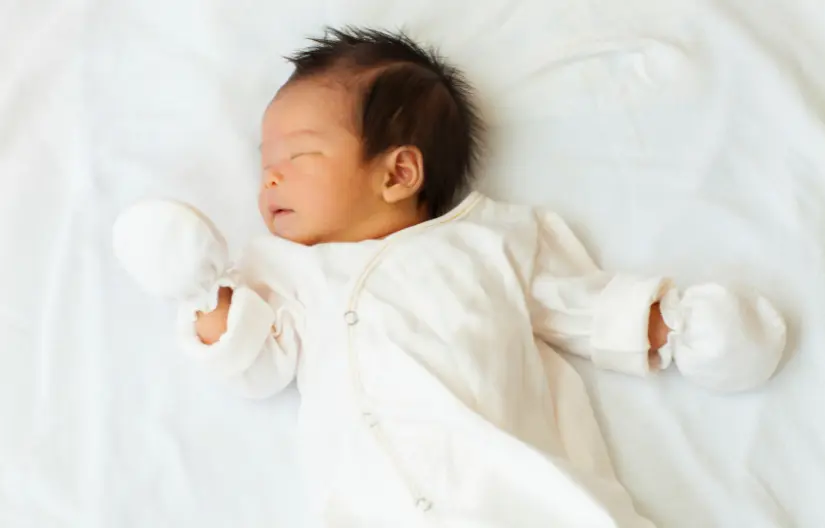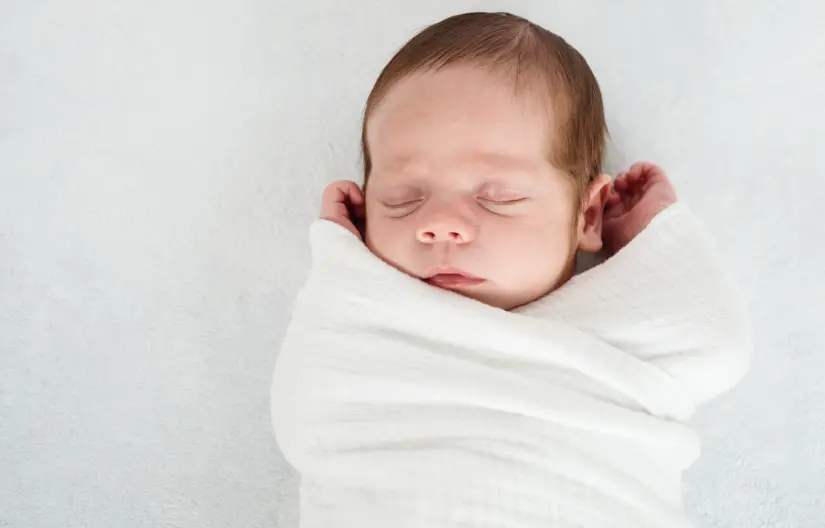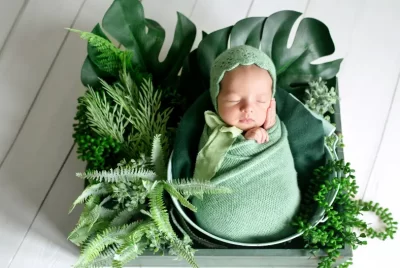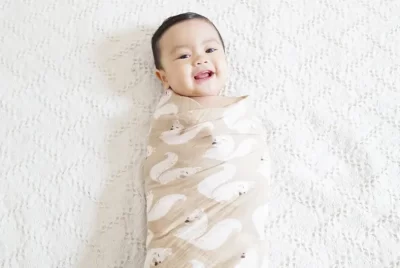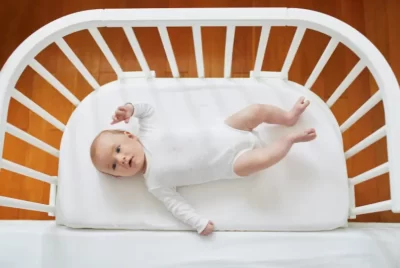What the baby should wear to sleep?
We may earn a small commission for purchases made using our links (not affecting your price).
See our disclosure to learn more.
You’ll probably obsess as a new parent over every detail of your child’s sleep, even what the baby should wear to sleep. Picking up the nicest pair of footie pajamas from their closet is not the only option. The clothing on your child must ensure that they stay at the right temperature all night long in their sleep baby pod or baby swing. Additionally, picking a dangerous alternative could make you more likely to choke or suffocate.
What the baby should wear to sleep?
Instead of just wearing thick pajamas, dress your baby in layers of tailored clothing. You can either put on or take off clothing depending on the temperature. To stay cool, babies sweat on their faces and heads. Babies who sleep with caps or beanies risk becoming quickly hot. Leaving your baby’s head uncovered while they sleep is essential. Wearing a headgear to bed may increase the risk of choking or suffocation.
Wrapping your baby for sleeping
Babies who are wrapped are more likely to fall asleep on their backs and to do so safely. Use muslin or cotton wraps that are lightweight if you decide to wrap your child. Overly high wraps might restrict your baby’s respiration and lead to hyperthermia. Make sure your infant can fully extend their legs.
And the wrap is not too constricting around their chest and hips. Too tight of around a baby’s legs and chest can cause respiratory and hip issues. In warmer weather, dress your kid in a singlet and diaper underneath the wrap. In chilly climates, you can add a lightweight grow suit.
Choosing Your Baby’s Bedtime Clothes
When a baby is sleeping, you need to make sure their body stays at the right temperature. Environments that are too hot can result in overheating, which is particularly harmful to infants as it has been related to sudden infant death syndrome (SIDS). Extreme cold, on the other hand, can also be risky and uncomfortable. The best indicator may not always be determined by how you feel in the nursery or bedroom.
Dressing your infant in one more layer than you would feel comfortable donning in the same situation is a good general rule of thumb. A layer should be added for your infant as you sleep. Babies frequently snooze in a onesie with attached sleep pants. Add an extra layer if your house is chilly, she advises. If swaddling, this additional layer can be a receiving blanket or, if the room is particularly chilly, a wearable baby sleep sack.
Consider the infant’s temperature and the room temperature before putting the baby to sleep.
Even though your baby’s hands and feet may feel cool, this is not a reliable way to gauge their temperature. By touching your baby’s back or stomach, you can determine how hot they are in reality.
Adjusting your baby’s attire is preferable to heating or cooling the space. However, if you need to change the room’s temperature while your infant is sleeping, only use a heater or fan. Just before bringing your infant into the room, turn the appliance off. Never heat your infant with hot water bottles or electric blankets during cooler weather. SUDI, which includes SIDS and deadly sleeping accidents, has been linked to overheating in children. Keep in mind that Your baby’s wear to sleep should be warm enough to be comfortable, not overheated, clammy, or cold.
Use Baby sleeping bags.
Consider dressing your kid for bed in a secure infant sleeping sack. The greatest approach to protect your baby’s head and face while they sleep is with a sleeping bag that is the right size.
- A secure baby sleeping sack aids in:
- The risk of SUDI, including SIDS and deadly sleeping accidents, should be decreased.
- Keep your baby’s legs contained so they don’t protrude through the cot rails and prevent them from turning onto their stomach when sleeping.
- Make sure your child cannot slide down into the sack and become completely covered. Red Nose advises using a sleeping bag without a hood but with a fitting neck and armholes.
- Thermal overall grade (TOG) ratings are available for some sleeping bags.
- It might guide your choice of sleeping bag for various temperatures. But remember that a TOG rating is only a suggestion.
- It is not a safety requirement. You can determine what garments to put on your kid underneath the bag using the bag’s rating or guidelines.
- The temperature of the room where your infant sleeps should always be taken into account, as these recommendations are simply a guide.
- If your baby sleeps with a blanket, it’s a good idea to dress the child in enough clothing to keep them warm in addition to a thin, lightweight blanket.
How is your baby Comfortable?
An infant should be assisted in maintaining a comfortable body temperature while being dressed for sleep. A newborn can avoid getting too hot or chilly by knowing what to look for. Due to the health concerns of overheating, experts advise against wearing a newborn too warmly while they are sleeping. Possible indicators that a baby is overheating include Sweating.
- A moist head of hair
- Skin that appears red or exhibits rash symptoms
- Cheek redness
- accelerated breathing
- A chest that feels heated to the touch
Advice on baby wear to sleep
- It can be difficult for parents and other caregivers to know which sleepwear is the safest option for a newborn because there are so many options available on the market. When looking for newborn sleepwear, there are a few suggestions that might be useful.
- Be aware of how much sleepwear they need: Having a lot of sleepwear is not necessary because babies grow so quickly. Usually, it has four to six parts.
- Online health resources are available at MedlinePlus for patients and their loved ones.
- To ensure that things are always tidy and dry when putting a baby to sleep, view Source of sleepwear is sufficient.
Important tips
Consider sleeping in a gown-like garment: Many parents and caregivers prefer sleepwear with a bottom that can be opened easily. When a baby’s diaper needs to be changed in the middle of the night, this design makes it easy to draw up and down rapidly.
Choose thin layers: The risk of overheating is reduced when a baby is dressed in multiple thinner layers that may be easily adjusted to meet the temperature of the bedroom.
Prevent safety risks: The risk of unintentional strangling is increased by strings and ties, so nothing, not even pacifiers, should be fastened to a baby’s clothing or baby’s wear to sleep. Stray buttons and other small items on garments should be taken off since they could come off and present a choking hazard.

